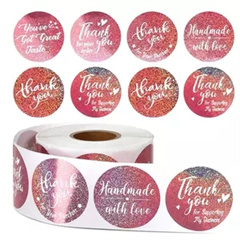1. When flat die-cutting, try to reduce the die-cutting area, especially the full-page small label, because the layout is large and the number of cutters is large, and the quality is difficult to guarantee.
2. According to the pressure limit of the equipment, correctly determine the total length of the blade of the die-cutting die.
3. Do not use a knife template that has been die-cut paper materials to die-cut film materials, because the blade has worn out and is not suitable for die-cutting films.
4. The pad should be replaced frequently during flat die-cutting, especially when processing long plates because the cut marks will affect the die-cutting quality of the new-format label.
5. Frequently check the quality of die-cutting, especially for labels with automatic labeling. In order to avoid mass quality problems.
6. To keep the blade sharp, establish a file to record the usage of each die-cutting plate so that the blade can be replaced in time.
7. For labels with high die-cutting requirements and complex patterns, you must go to a professional manufacturer to make laser die-cutting plates, so as to ensure die-cutting accuracy.
8. Use a small-angle, high-hardness imported special blade to die-cut film-type adhesive materials, especially PET materials.
9. Attach beer glue correctly, pay attention to the position, height, etc., and use appropriate pads (iron plate, acrylic, and plastic have different responses).








